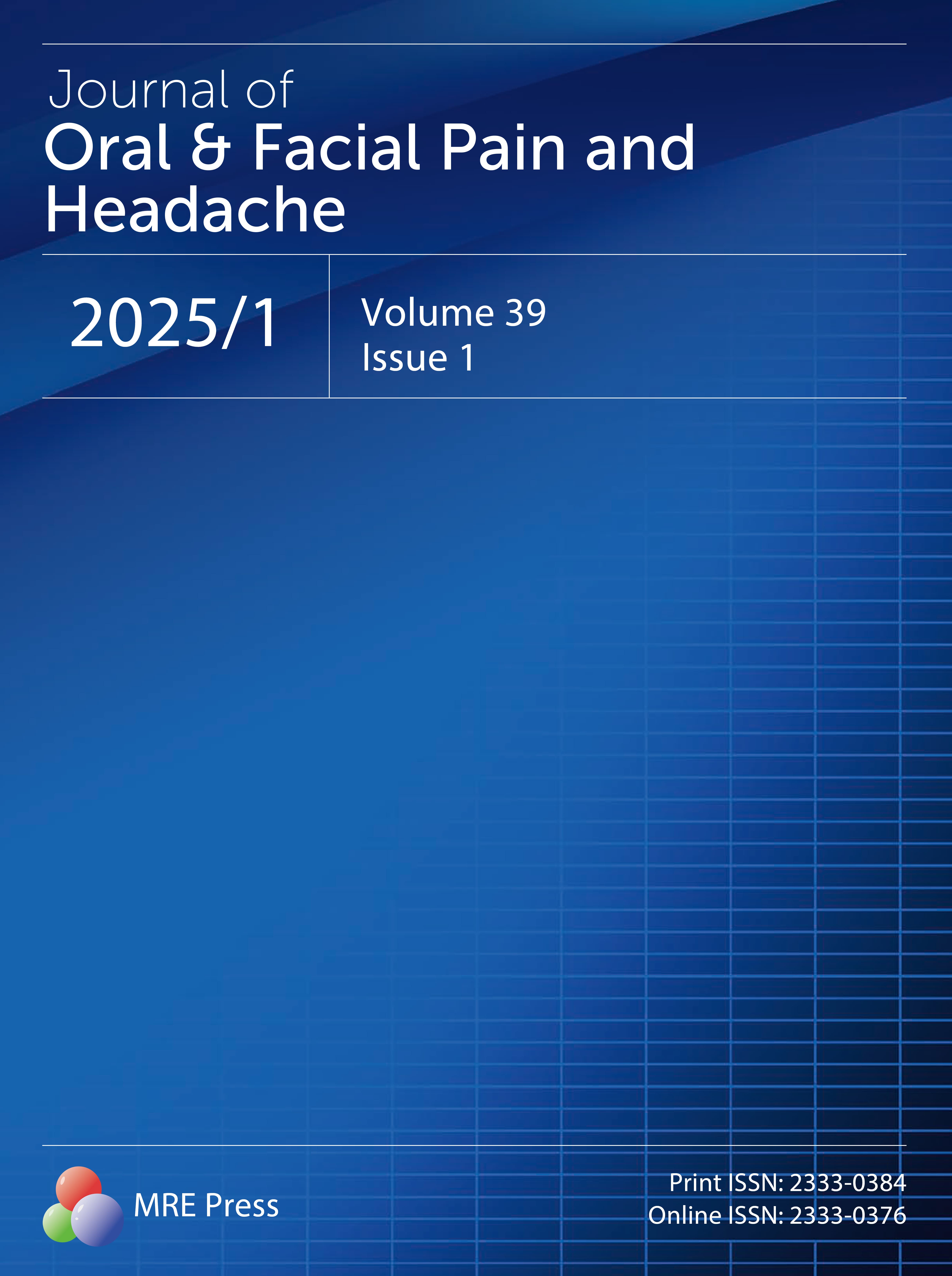Title
Author
DOI
Article Type
Special Issue
Volume
Issue
Article Menu
Export Article
More by Authors Links
Article Data
- Views 602
- Dowloads 40
Journal of Oral & Facial Pain and Headache (OFPH) is published by MRE Press from Volume 38 lssue 1 (2024). Previous articles were published by another publisher on a subscription basis, and they are hosted by MRE Press on www.jofph.com as a courtesy and upon agreement with Journal of Oral & Facial Pain and Headache.
Original Research
Open AccessA Cognitive-Behavioral Approach To Temporomandibular Dysfunction Treatment Failures: A Controlled Comparison
A Cognitive-Behavioral Approach To Temporomandibular Dysfunction Treatment Failures: A Controlled Comparison
- Mark E. Oakley1
- Charles P. McCreaty1
- Glenn T. Clark2
- Steve Holston1
- Dorothy Glover3
- Kathleen Kashima1
1Department of Psychiatry and BiobehavJorsI Sciences, School of Medicine, University of California, Los Angeles, California, USA
2School of Dentistry, University of California, Los Angeles, California, USA
3Department of Psychology, University of California, Los Angeles, California, USA
Abstract
The effects of cognitive-behavioral treatment for patients with temporomandibular disorders were studied by comparing active treatment to a wait-list control condition. Patients were predominantly women and had been referred to the study after having poor response to dental/physical medicine care. Patients' conditions were evaluated pretreatment and posttreatment based on self-report measures of pain, distress, and jaw function problems. They were examined by a dentist who assessed pain-free opening, muscle palpation pain, and tenderness of the temporomandibular joints. The 5-week cognitive-behavioral treatment included relaxation training, self-monitoring of stressors, and cognitive coping strategies. Treatment had its greatest impact on improving mood, especially anxiety; however, there were some effects on the patients' experiences of pain.
Cite and Share
Mark E. Oakley, Charles P. Mccreaty, Glenn T. Clark, Steve Holston, Dorothy Glover, Kathleen Kashima. A Cognitive-Behavioral Approach To Temporomandibular Dysfunction Treatment Failures: A Controlled Comparison. Journal of Oral & Facial Pain and Headache. 1994. 8(4);397-401.
References

Abstracted / indexed in
Science Citation Index (SCI)
Science Citation Index Expanded (SCIE)
BIOSIS Previews
Scopus
Cumulative Index to Nursing and Allied Health Literature (CINAHL)
Submission Turnaround Time
Editorial review: 1 - 7 days
Peer review: 1 - 3 months
Publish Ahead of Print: within 2 months after being accepted
Notes: Your information is kept confidential throughout the review process.
Top
